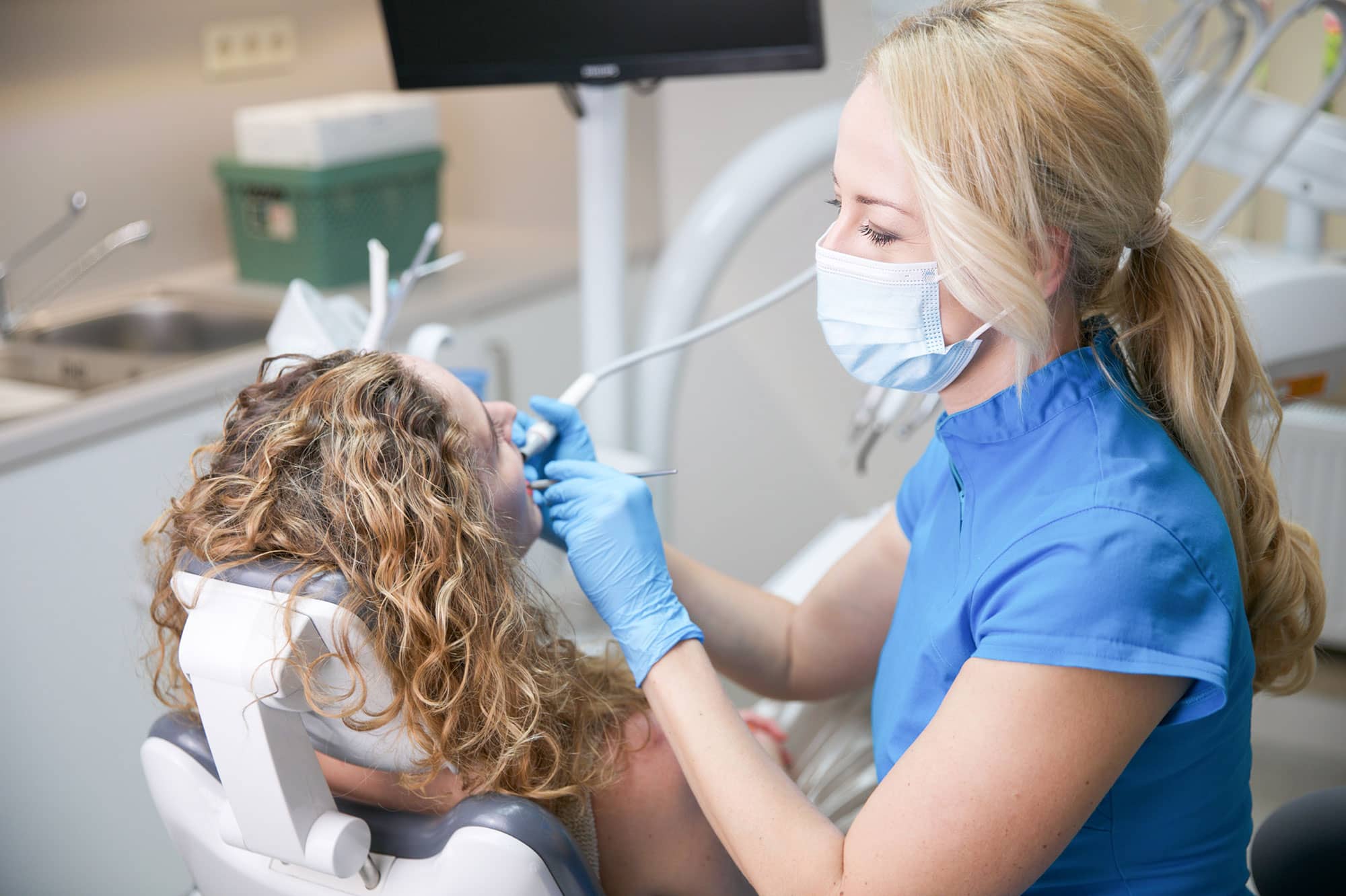In our previous articles, we discussed the possible complications of a bone graft and the relationship between Bone Graft and Smoking. Now we explain in detail what you can expect after a bone graft. As we consider this extremely important, we will address the instructions for the first days after the procedure separately.
This article is aimed at patients who are preparing for a jaw or dental bone graft or have recently undergone one and wish to understand the healing process, symptoms, and further procedure after the operation.
Our article discusses the following issues:
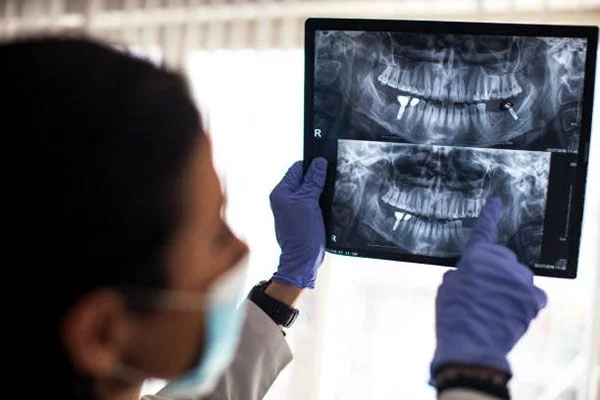
- Bone grafting as a surgical procedure
- What happens after jaw bone augmentation?
- What should we pay attention to after dental bone graft surgery?
- Dental bone graft recovery: Treatment of the symptoms and side effects, general information
- How do I know if my bone graft is healing correctly?
- Dental bone graft aftercare: What is the next step after bone graft?
Bone grafting as a surgical procedure
In the course of the bone graft, the missing bone volume in the jaw is replaced and rebuilt. A bone graft is a surgical procedure that requires a minor or major intervention, therefore it can only be performed by a specialized dentist and surgeon. Depending on the extent of the procedure (extent of the injury) and the type of bone graft, the doctor makes a smaller or larger incision on the patient’s body. Subsequently, he places the material necessary for bone regeneration and closes the wound.
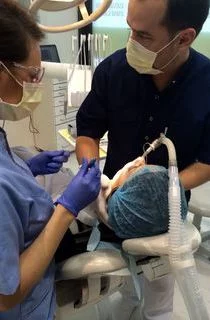
In the case of a bone graft using the patient’s own bone, the bone to be inserted is taken from the patient’s body, then – after appropriate preparation – this bone is inserted into the jaw. In this case, we can therefore speak of two surgical sites. The first surgical site can be, depending on the doctor’s decision, either in the area of the jaw or in other areas of the body. The timing of the two surgeries is usually different, except in the case of minor procedures. In the case of a bone graft using human bone or synthetic material, a surgical intervention on the patient’s body is only necessary at a single site. The following deals with the symptoms, possible or regular side effects, and the treatment of symptoms that occur after the bone grafting surgery. Read more about the possible Problems After Bone Graft.
What happens after jaw bone augmentation?
After the bone graft, the body begins to form new, living bone, and the graft gradually integrates into the existing bone.
What are the dental bone graft healing stages? – the first few days following surgery
There are no two identical bone grafts. Every oral surgery operation is specific. In surgical procedures for bone grafting, there can be significant variations, from quickly healing minor injuries to surgical sites with a larger extent. The first days after the surgery are particularly important for healing. In this chapter, we therefore discuss the phenomena possible during this time. These require a thorough discussion with the doctor in an individual consultation.
Treatment of the wound and oral hygiene
After the bone graft surgery, the treating doctor usually places a gauze bandage on the wound, which should generally be left on the wound for 30 to 60 minutes. If the bleeding has stopped, you do not need to expect any further instructions and measures except for adhering to the measures discussed in the next chapter.
After a serious procedure, further bleeding can occur. In these cases, you are still under medical supervision. Thus, the specialist attending to you will take the necessary measures. For some patients, a protective stent is used, which is worn over the teeth. The protective stent can be removed later when eating.
In the first days, irritation and touching of the wound should be avoided. Mouth rinsing can be done earliest on the second day after the surgery.
Foreign substances in the mouth
In the first days after the bone graft, it may happen that you feel tiny crumbs in your mouth. It can also happen even if you have not consumed solid food. In this case, the following is actually happening: Some tiny granules migrate from the surgical site affected by the bone graft into the oral cavity.
This process is natural on a small scale, you should not be afraid of it. It is also very important to observe the instructions for wound care, i.e., to avoid further irritation. Do not keep looking at your wound and do not worry. However, if you feel crumbs in larger quantities in your oral cavity, be sure to contact your treating doctor.
Lifestyle
On the day of the bone graft surgery and if necessary on the first days afterwards, you should rest as much as possible. If possible, sleep on your back and place pillows under your head. At least in the first week, you should avoid activities involving more intense physical activity, as well as sports. If possible and you can manage it, you should not drive a car. It is very important to follow the diet prescribed by your doctor, to refrain from alcoholic beverages and from smoking.
How long does it take to heal after a dental bone graft? – The Ossointegration
This is the process where the bone graft fuses with your jawbone and forms a solid foundation for dental implants. It can take several months (usually 3-9 months) for the ossification to be complete. The healing process and time interval can vary depending on the type of bone graft used, the size of the replaced area, your general health condition, and the treatment of any symptoms and side effects that occur. Our surgeon will give you specific instructions and a personalized recovery plan with to-dos and follow-up appointments
What should we pay attention to after dental bone graft surgery?
After the bone graft, depending on the extent of the procedure, one must generally observe more or less the following.
- Swelling
- Bleeding
- Pain
- Risk of Infection, Antibiotics
- Oral Hygiene
- Smoking
- Diet
- Prosthesis
- Discolouration, Bruises
- Nausea, Vomiting, Dizziness
- Suture
- Allergic Reactions
- Swallowing difficulties, Muscle stiffness
- Further complications, etc.
In the next chapter, we will deal with the measures concerning the phenomena listed above. We provide tips and practical advice for the treatment of symptoms and side effects.
Dental bone graft recovery: Treatment of the symptoms and side effects, general information
In our previous article, we already covered the instructions regarding the diet to be followed during the bone graft, and otherwise concerning lifestyle (sleeping, bleeding, pain relief, diet, etc.). In the following part, these will be briefly discussed, and then, in addition, the further measures listed above, concerning the time immediately after the bone graft surgery, will be presented.
Swelling, bleeding, pain
Swelling, bleeding, and pain are typical symptoms that occur to a lesser or greater extent depending on the type and extent of the surgical procedure for bone grafting.
For pain relief, your doctor will recommend, and if necessary prescribe, medication for you. It may happen that the pain is not significant; it is similar in feeling to a tooth extraction. The painkiller used during the operation also relieves this pain for a while.
External cold treatment can help a lot in relieving the swelling, bleeding, and pain that occur after the bone graft. In the case of serious bleeding, it can help if you bite on a sterile gauze pad. If the bleeding continues, try biting gently on a wet tea bag. The tannic acid in the tea can have a positive effect on blood clotting. You should seek advice from your doctor regarding the strength of the bite. Try to remain calm. In case of more serious bleeding, see your doctor.
Infection after the dental bone graft, antibiotics and anti-inflammatory agents
In case of risk or occurrence of infection and inflammation after an upper jaw bone graft, seek advice from your doctor, who will provide you with the appropriate antibiotic or anti-inflammatory medication.
Lifestyle: oral hygiene, smoking, diet, wearing the prosthesis
On the day of the bone graft surgery, you can swallow the accumulated saliva, but avoid sucking movements and rinsing your mouth. On the day after the surgery, doctors generally recommend rinsing with warm, salty water. This procedure can reduce the risk of infections. In the first days after the bone graft surgery, brushing your teeth should be done very gently, and the toothbrush should have soft bristles. From the time determined by the doctor after the bone graft, the use of a water flosser can become useful. The cleaner the wound is, the easier it heals.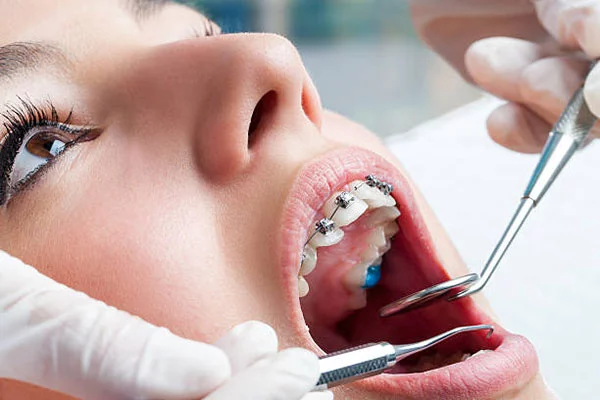
What not to do after a dental bone graft?
In our previous article, we already wrote about how smoking impedes healing. In a more difficult case, the performance of the operation can even be jeopardized. If you smoke, you should inform your doctor about it, and at least in the first days after the bone graft, you should ideally not smoke. If necessary, you can satisfy your nicotine craving with special patches.
What to eat after bone building?
After the bone graft, when the effect of the anesthesia from the surgery has completely worn off, you are generally allowed to consume only liquids for a while, initially only water. Avoid sucking movements, drink from a glass. Later, take in high-calorie, protein-rich, preferably liquid or soft foods and drinks. Try to eat several times and in smaller portions. Avoid consuming hard, sharp-edged foods that require biting. Do not drink alcohol or carbonated beverages. If necessary, ask your doctor to prescribe nutritional supplement drinks high in protein and calories.
In the period after the bone graft, it is generally not recommended to wear an existing denture. The denture can injure or press on the surgical site.
Discolouration and bruises
Although rare, it can happen that on the second or third day after the bone graft surgery, a discoloration is visible on the skin at the site of the swelling. This discoloration can be black, blue, green, or yellow. This phenomenon is a skin manifestation that follows the spread of blood under the tissues. It is rare but not dangerous in itself and also passes quickly.
Nausea, vomiting and dizziness
After the bone graft, nausea, vomiting, and dizziness can also occur. It is very helpful if you try to rest, lie down, take plenty of fluids in small sips, and avoid consuming solid foods. Avoid sudden movements. If necessary, the use of medication is recommended.
Sutures
The purpose of the sutures is to stop the bleeding after the bone graft surgery. Generally, doctors use self-dissolving sutures, or sutures that fall out by themselves without problems about a week after the bone graft surgery.
Allergic reactions
In some cases, allergic reactions can occur after the bone graft surgery as a result of one of the medications used by the doctor. This is also why it is important to mention all known allergic reactions during the informational consultation before the surgery. An allergy can be indicated, for example, by itching and rash-like changes. In these cases, you should inform your doctor, who will recommend or prescribe a medication of a different kind. In more severe cases: In case of significant swelling of the face and neck, you should immediately contact the emergency department of the nearest hospital or call the ambulance service.
Swallowing difficulties and muscle stiffness
After the Bone Graft swallowing is often more difficult, the jaw muscles are stiffer. These phenomena are naturally associated with the healing process. Adhering to the diet is also very helpful in this set of problems.
Further complications
As other complications, numbness of the lips, chin, or tongue, slight fever, dry mouth, and sore throat can occur. To a lesser extent, these symptoms are no cause for concern. In most cases, only some of the symptoms described above occur. The most common are pain, swelling, and slight bleeding, which can even subside completely 2 to 3 days after the bone graft surgery. If you experience unusual or more severe symptoms, you should immediately consult your treating physician.
How do I know if my bone graft is healing correctly?
In the first few weeks, you will gradually decrease pain and swelling and not bleed.
In the long term, the bone replacement must be stable and not dislodge. The gum tissue around the graft should be healthy—pink and firm. Our dentist takes X-rays regularly to monitor bone growth and integration.
Dental bone graft aftercare: What is the next step after bone graft?
During the healing period after the bone graft, ideally, the inserted material is accepted by the body. This allows the development of new bone to begin, and the jaw bones become stronger. Rarely, it can happen that the inserted material is not accepted by the body and a new bone graft surgery becomes necessary.
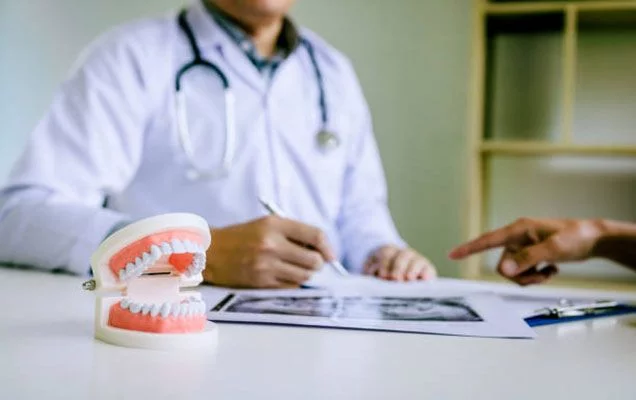 The area treated with a bone graft can become suitable for performing other surgical procedures depending on the degree of healing, including for insertion of dental implants.
The area treated with a bone graft can become suitable for performing other surgical procedures depending on the degree of healing, including for insertion of dental implants.
Bone grafting has undergone considerable development in recent years. According to experts, bone grafts are now often performed routinely, but the success of recovery also depends on the patient’s health condition, adherence to the doctor’s instructions, and avoidance of complications. Check the dental bone graft costs
In our article, we tried to thoroughly prepare you for the risks and phenomena of the bone graft surgery. Bone replacement procedures have advanced significantly in recent years and are associated with less pain in many cases, but in some cases, complications can occur that require individual treatment. We therefore ask you to listen carefully to your doctor’s instructions and follow his prescriptions.

